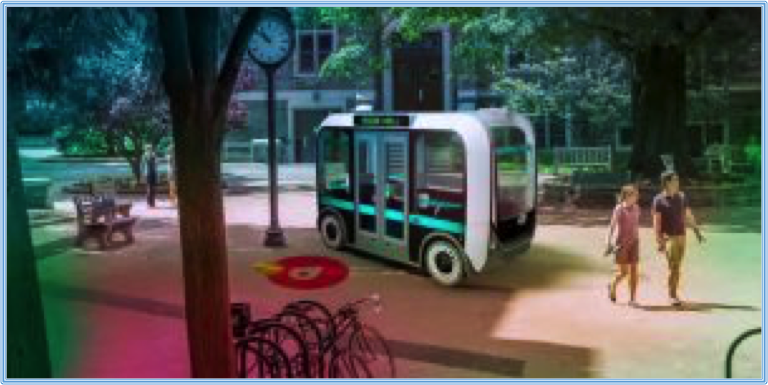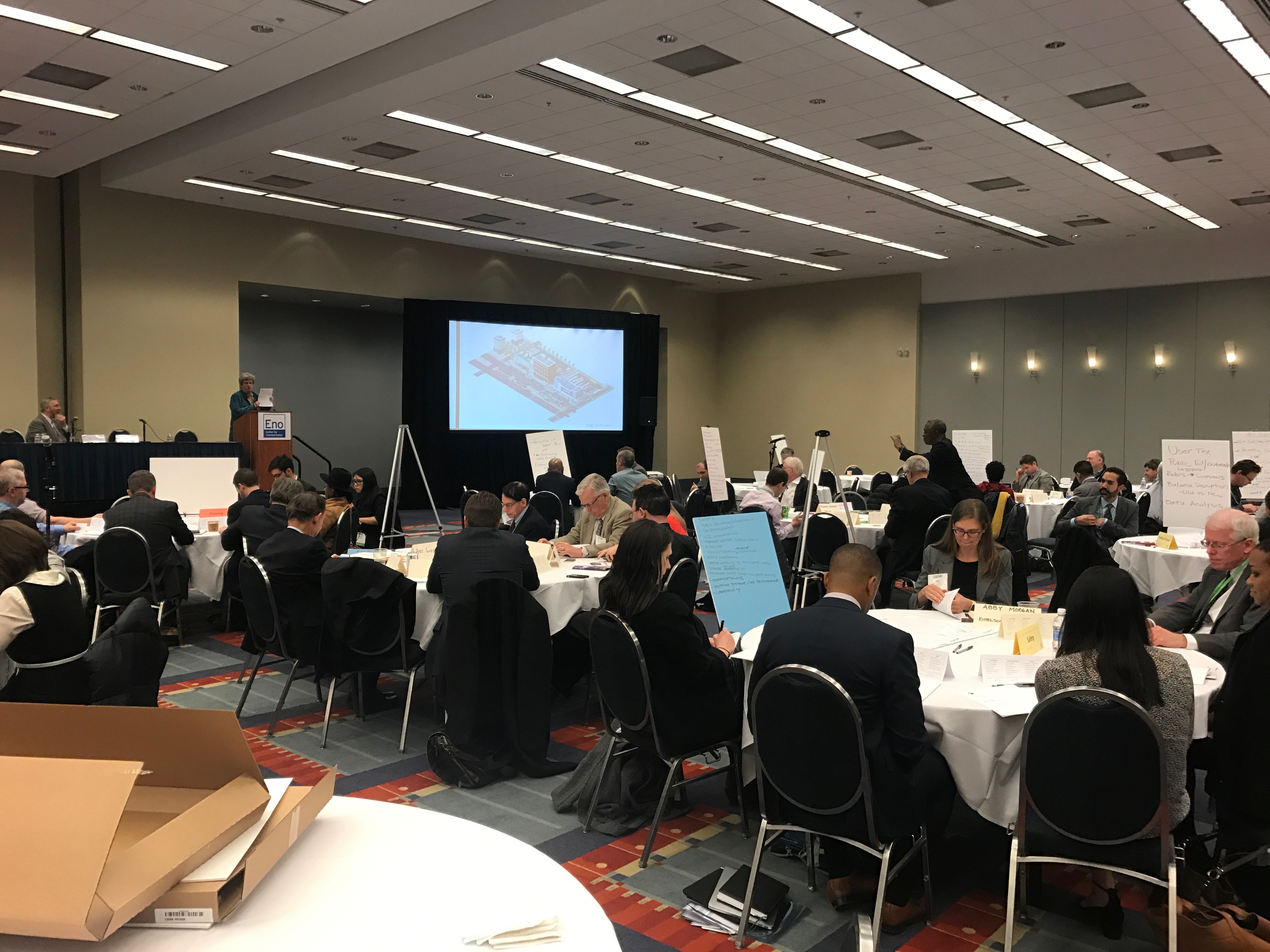Kelley Coyner and Lisa Nisenson led the capstone session of Eno’s Capital Convergence, Taking it to the Streets: Creating the Strategies to bring an AV Shuttle to the Region
At Eno’s Capital Convergence conference, technology leaders like David Woessner of Local Motors demonstrated that transformative transportation technologies – including autonomous vehicles (AVs) – already exist in the DC area and in regions across the country.
While full replacement of the cars on the road now is still decades away, some driverless vehicles are already on the streets now. The question is how communities can move from “what if” to “what is?”
The choices we make now at the national, state, and city levels will shape whether AVs improve mobility or create new kinds of congestion. Actions taken can influence whether AVs improve safety on our roads or become a menace to drivers, pedestrians, and cyclists. The alternatives we select now can either harness the economic and transportation benefits of AVs or cause us to lose jobs and leave some communities behind.
Our answer is for communities to engage in “fast action planning” that is supported by innovation harnessing policy rather than policy-driven technology. Initially, these terms are may seem counter-intuitive or even contradictory in our fields of planning and policy. Our three-part proposition is to:
- Expand the playing field by demonstrating the current state of the technology to states and cities;
- Frame and implement strategies that promote adoption in high value uses first; and
- Create a playbook of implementation strategies that can be tailored to individual communities.
Eno’s Capital Convergence conference showcased technologies that are ready to be implemented. After a day of discussing opportunities to capitalize on innovative transportation technologies, attendees started developing the strategies needed to accelerate the deployment of AVs in the DC region and nationally over the next few years.
Three regional leaders spoke to the opportunities for deploying a shared autonomous shuttle in an urban area like Arlington’s Crystal City and identified multiple potential use cases including circulators, mall and downtown revitalization, campus use, and transit connections.
David Woessner of Local Motors, a U.S.-based AV manufacturer, reported on the launch of its self-driving electric bus, Olli, at National Harbor in Maryland last summer as well as the December 2016 pilot of a driverless shuttle service on a semi-public campus in Berlin. Woessner said, “Our plan is to expand our test, demo, and pilot the Olli in the District, Maryland, and Virginia [DMV] beyond National Harbor in 2017 and 2018. “
Jason Fundin, Chief Strategy Officer of Vornado/Charles E. Smith, Crystal City’s largest commercial landowner, sees AV shuttles as key to making a Crystal City a transportation tech hub that can redefine transportation-oriented development. Fundin noted that the Olli Shuttle Service could strengthen connections to adjacent commercial, retail, and residential centers in Potomac Yards, Pentagon City, and within Crystal City. In doing so, Olli could provide first and last mile connections to transit, rail hubs, and Washington Reagan National Airport.
Steve Taylor, General Manager of Lyft’s DMV Operations, highlighted how an Olli Shuttle Service could give transportation network companies like Lyft a breakthrough approach to vehicle sharing. “A partnership with Olli, like the one we have now with General Motors, would advance new models for mobility services and vehicle ownership,” he said.
What strategies in policy and law, funding and finance, safety, and planning are needed to get driverless fleets and shuttles to the streets of the DMV and beyond? Eno’s audience of transportation experts produced over 300 ideas on poster boards, post-its, and individual notes.
Through our initial review and eavesdropping on the conversations, we identified some common strategies:
- Engage the public to formulate guiding principles and desired outcomes when integrating technology into transportation systems including land use;
- Ensure cyclist and pedestrian safety through design and education;
- Resolve liability and law enforcement questions so that lifesaving potential of new technologies is not delayed or lost;
- Recognize the existing funding constraints on infrastructure maintenance and construction, and expand transportation management associations, tax increment funding/value capture, and other funding mechanisms;
- Address the many ways in which AVs need to be integrated into the transportation network including street design, curb use, parking, and connections to transit and intercity transportation networks; and
- Recognize that technology is not now driven by safety policy as it earlier eras; instead technology that can dramatically improve safety has leapfrogged ahead of policy.
What should we be doing nationally, at the state level, and in communities across the country? Stay tuned. We are working with Eno to synthesize those ideas into research, business, planning, and policy strategies. After this, we will begin the nitty-gritty work of implementing our philosophy of fast action planning and innovation-harnessing-policy.
(Photo: cnn.com)





